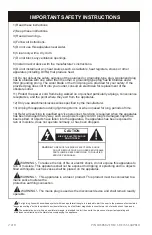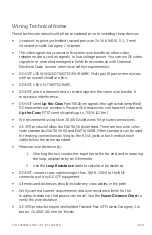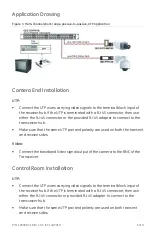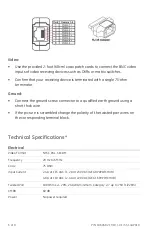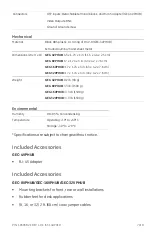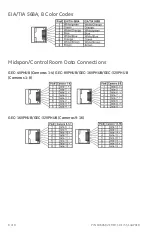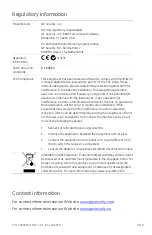
P/N 1069682 • REV 1.0 • ISS 14APR10
3 of 9
Wiring Technical Notes
These technical notes should all be considered prior to installing these devices.
• Use point to point unshielded twisted pair wire 24-16 AWG (0, 5-1, 3 mm)
stranded or solid, Category 2 or better.
• The video signal may coexist in the same wire bundle as other video,
telephone, data, control signals, or low-voltage power. You can run GE video
signals in or near electromagnetic fields (in accordance with National
Electrical Code, local or other local safety requirements).
• DO NOT USE SHIELDED TWISTED PAIR WIRE. Multi-pair (8 pair or more) wires
with an overall shield are fine.
• DO NOT USE UN-TWISTED WIRE.
• DO NOT place a transmit and a receive signal in the same wire bundle. It
may cause interference.
• DO NOT send
Up-the-Coax
Pan/Tilt/Zoom signals through active (amplified)
GE transmitters or receivers. Passive GE transceivers can transmit video and
Up-the-Coax
P/T/Z control signals up to 750 ft. (228 m).
• We recommend using short 18 AWG solid wires for ground connections.
• GE VPD products follow the EIA/TIA 568 standard. There are two wire color-
code standards: EIA/TIA 568A and EIA/TIA 568B. Either standard can be used
for making connections as long as the RJ-45 jacks at both ends of each
cable follow the same standard.
• Measure wire distance by:
1. Shorting the two conductors together at the far end, and measuring
the loop-resistance by an Ohmmeter.
2. Use
the
Loop Resistance
table to calculate the distance.
• DO NOT connect coax cables longer than 100 ft. (30 M) to the BNC
connectors of any GE UTP equipment.
• All measured distances should include any coax cables in the path.
• Verify camera current requirements and wire resistance limits for the
maximum distance that power can travel. Use the
Power Distance Chart
to
verify the wire distance.
• GE VPD products require Unshielded Twisted-Pair (UTP) wires Category 2 or
better, 24 AWG (0,5 mm) or thicker.


